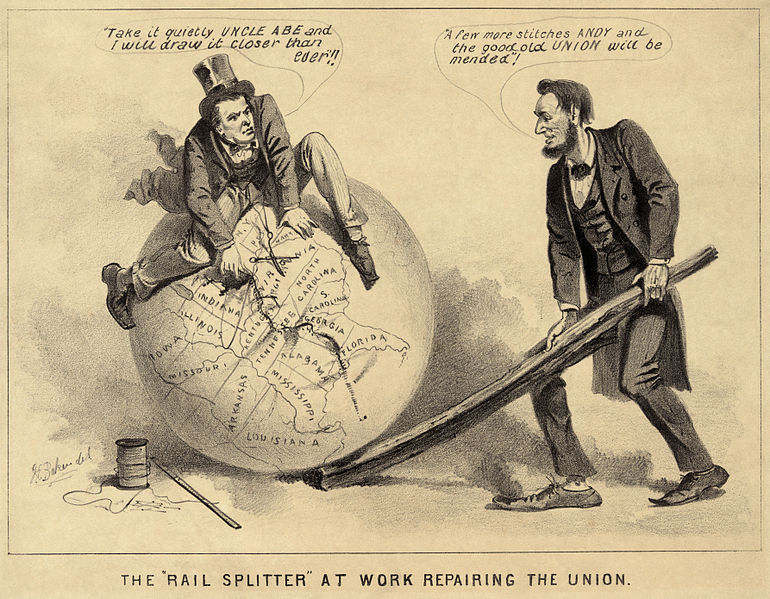 I was listening to the audio version of Adam Goodheart’s amazing book, 1861, when the phrase “The Little Dougs” leaped out at me. As a Doug myself, I have to say I like the sound of the Little Dougs, the name that supporters of the famed Illinois Senator, Stephen A. Douglas, gave themselves.
I was listening to the audio version of Adam Goodheart’s amazing book, 1861, when the phrase “The Little Dougs” leaped out at me. As a Doug myself, I have to say I like the sound of the Little Dougs, the name that supporters of the famed Illinois Senator, Stephen A. Douglas, gave themselves.
But, alas, I am an Abe Lincoln guy, not a Stephen Douglas guy, despite his group’s nickname.
I also have to admit that Lincoln’s nickname–“The Rail-Splitter”–was much more effective. In fact, Goodheart says the split rail may have been the greatest political symbol ever in American history. Lincoln’s friends, Richard Oglesby and John Hanks, snatched some rails from land just west of Decatur and hauled them to the Republican convention in Chicago, where they sold the rails for a pricey $1 apiece (although they would be worth a fortune today on Antique Roadshow).
“It is hard to imagine today how some lengths of old lumber could electrify a large tentful of jaded politicos–let alone much of the nation,” writes Goodheart. “But the split-rail fence, sometimes known as a ‘worm fence,’ was a powerful symbol in the nineteenth century.” Split rails represented hard work, individualism, the rural way of life, the working class, and a sense of community, “since they were often constructed by groups of neighbors coming together to pitch in.”
The Rail-Splitter also trumps the nicknames, the Bell Ringers and the Clapperites–the names adopted by supporters of candidate John Bell. And yes, it even tops the Little Dougs, although maybe I could convince my family to adopt that name.
Probably not.
By Doug Peterson
